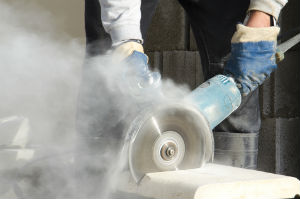 Approximately 2.3 million U.S. workers are exposed to dangerous silica dust on the job. Breathing in these particles may cause kidney disease, chronic obstructive pulmonary disease (COPD), lung cancer or silicosis, claiming more than 600 lives every year.
Approximately 2.3 million U.S. workers are exposed to dangerous silica dust on the job. Breathing in these particles may cause kidney disease, chronic obstructive pulmonary disease (COPD), lung cancer or silicosis, claiming more than 600 lives every year.
The Occupational Safety and Health Administration (OSHA) has announced its final ruling on a revision of the acceptable levels of exposure to workplace silica dust. Currently, the permissible level is 100 micrograms of silica dust per cubic meter of air over an eight-hour shift. The new ruling lowers permissible levels to 60 micrograms of silica dust per cubic meter of air per eight-hour shift.
The ruling is expected to prevent more than 900 cases of silicosis every year, generating $7.7 billion in benefits each year.
Under the new ruling, employers must utilize measures to reduce employee exposure and develop exposure control plans. Engineering controls must be in place to restrict workplace exposure, and respirators must be provided when silica dust levels cannot be adequately limited through engineering controls.
Employers must provide training to inform employees of the risks associated with silica and ways to limit their exposure. They must offer medical examinations to monitor employees working in identified high exposure areas.
The original OSHA standard was set it 1971 and no longer properly protects today’s workers. New industries, such as fracking and stone countertop fabrication, have developed in recent years, increasing the number of workers exposed to silica dust.
The new silica dust rule goes into effect June 23, 2016. Industries must be in compliance by:
- Employers in the construction industry must be in compliance by June 23, 2017.
- Those in general industry and maritime must be in compliance by June 23, 2018.
- Hydraulic fracking industry employers must be in compliance by June 23, 2018, excluding those in engineering controls, which must be in compliance by June 23, 2021.
If exposure to high levels of silica dust in the workplace contributed to your illness, you may be entitled compensation for lost wages, medical bills, and pain and suffering. The workers’ compensation lawyers at GWC Injury Lawyers will pursue your claim, working to maximize compensation for your workplace injury.
<< BACK TO BLOG POSTS